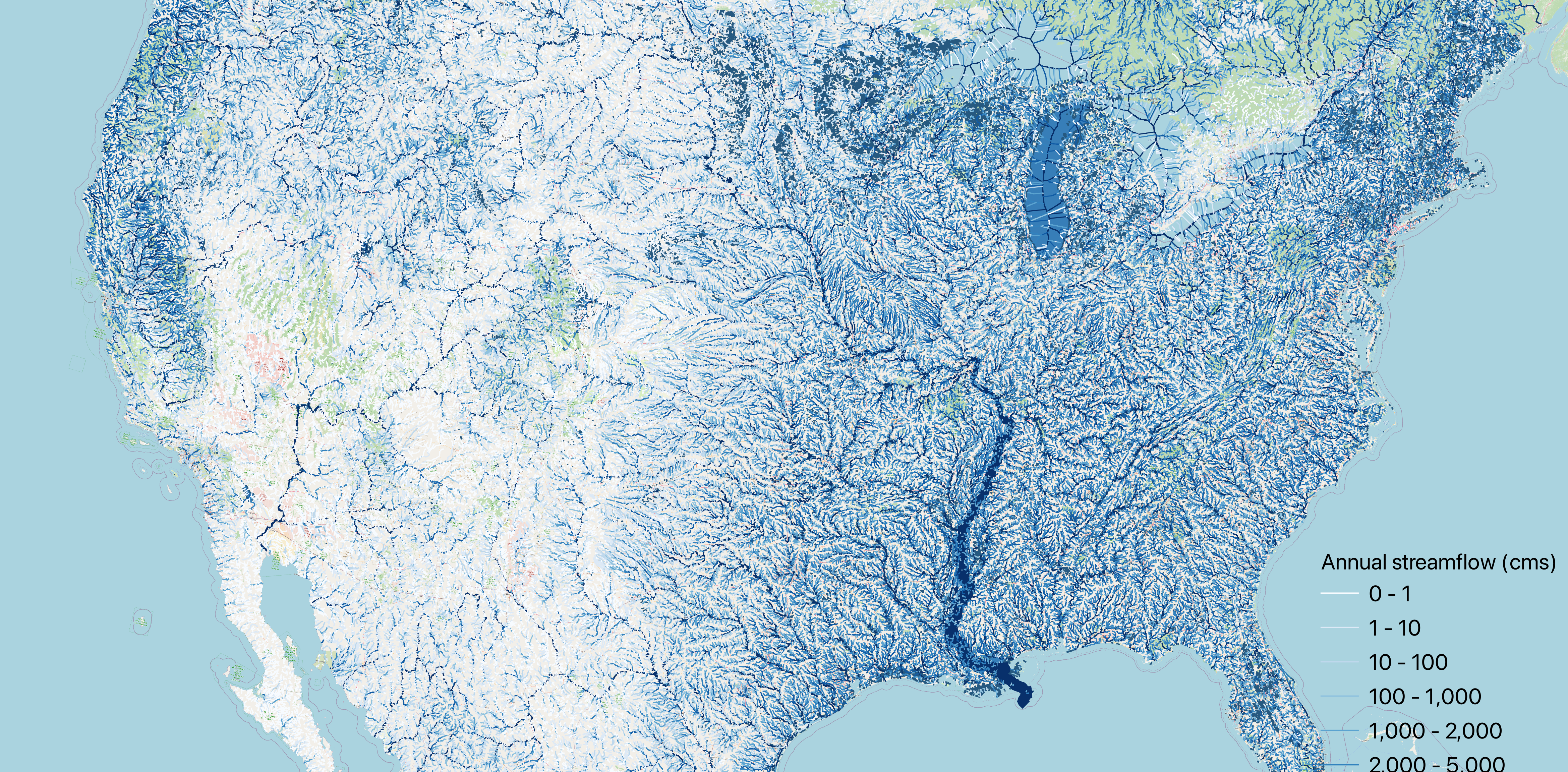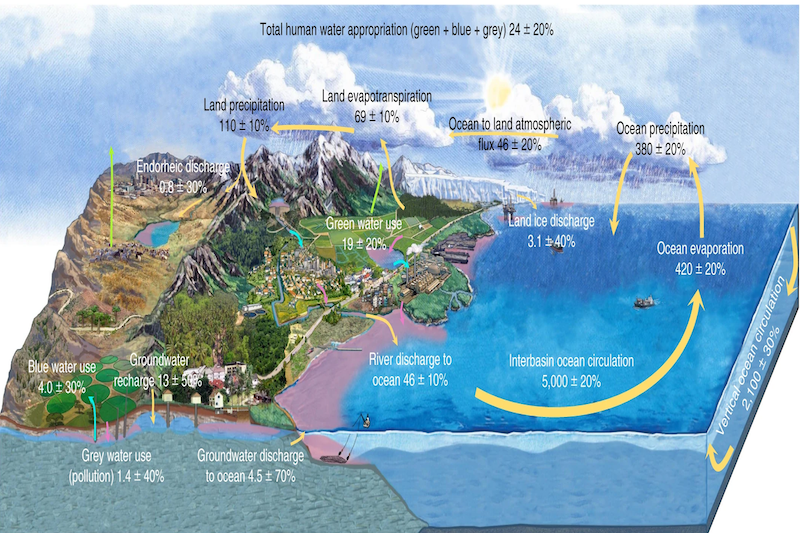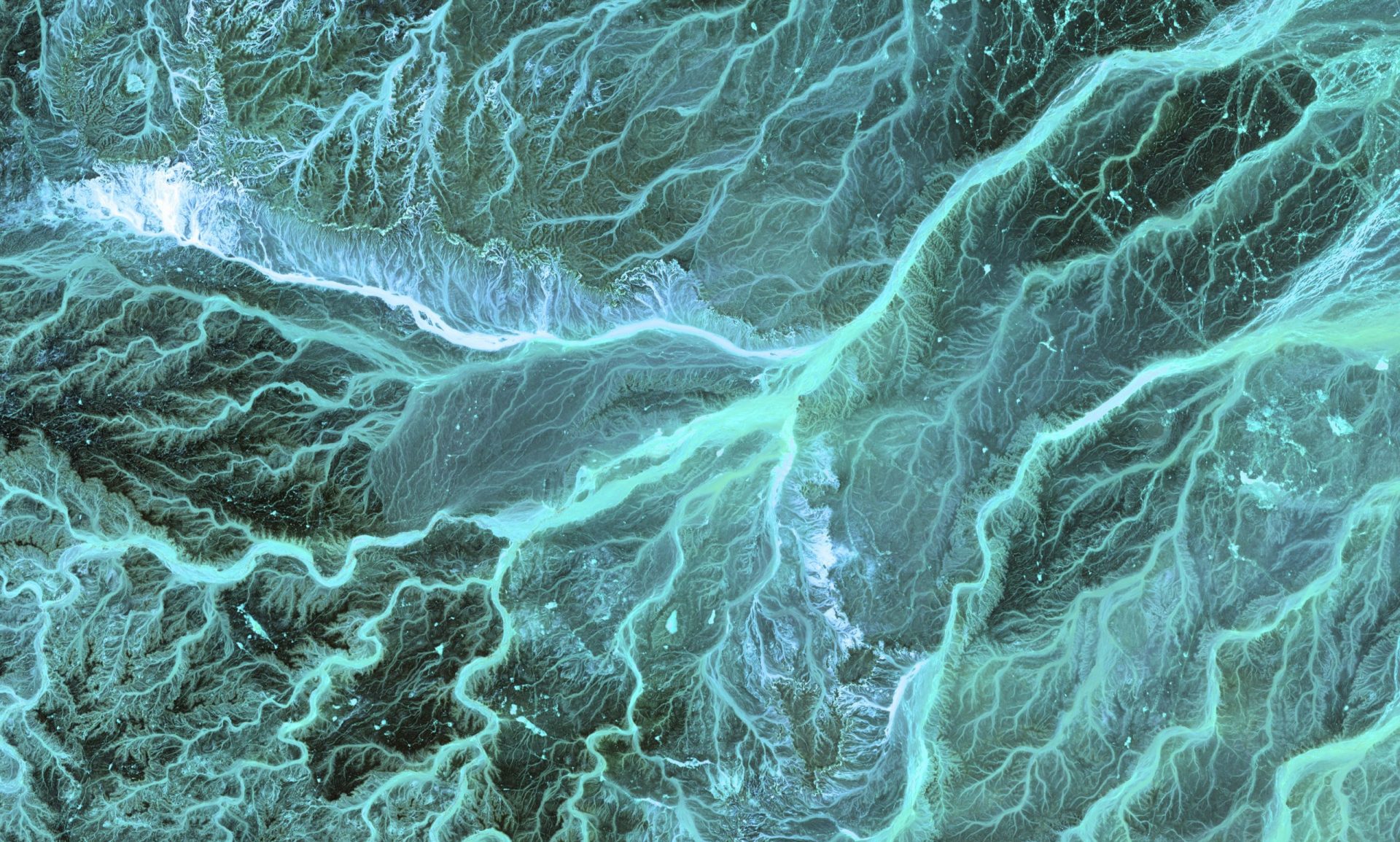Exploring scientific unknowns
I have a broad research experience, ranging from Remote Sensing and Hydrometeorology (RT1) in general, to Flood Inundation Mapping (RT2), to Hydrologic Simulation and Flooding (RT3), to Land-Atmosphere Interaction (RT4), to Climate Change Impacts on Extreme Events (RT5), and to Environmental and Climate Justice (RT6).
For a full list of publication, please refer to Publication

Research Thrust 1: Remote Sensing and Hydrometeorology
My research has used many remote sensing products, such as satellites (GPM, SMAP, GRACE, Landsat, etc.) and weather radars (WSR-88D), to capture extreme hydrometeorological events and hydrologic water cycle.
Selected Reference:
Li, Zhi, Wen, Y., Liao, L., Wolff, D., Meneghini, R., & Schuur, T. (2023). Joint Collaboration on Comparing NOAA’s Ground-Based Weather Radar and NASA–JAXA’s Spaceborne Radar. Bulletin of the American Meteorological Society, 104(8), E1435-E1451. https://doi.org/10.1175/BAMS-D-22-0127.1
Li, Zhi, Tang, G., Kirstetter, P., Gao, S., Li, J.-L. F., Wen, Y., & Hong, Y. (2021). Evaluation of GPM IMERG and its constellations in extreme events over the conterminous United States. Journal of Hydrology, 267, 112725. https://doi.org/10.1016/j.jhydrol.2021.127357.
Li, Zhi, Tang, G., Hong, Z., Chen, M., Gao, S., Kirstetter, P., . . . Hong, Y. (2021). Two-decades of GPM IMERG early and final run products intercomparison: Similarity and difference in climatology, rates, and extremes. Journal of Hydrology, 594, 125975.
Wang, T., Li, Zhi, Ma, Z., Liu, C., Tang, G., Diverging identifications of extreme precipitation events from satellite observations and reanalysis products: a global perspective based on an object-tracking method, Remote Sensing of Environment, 288, 113490, doi: 10.1016/j.rse.2023.113490.
Gao, S., Li, Zhi, Chen, M., Lin, P., Hong, Z., Allen, D., . . . Hong, Y. (2021). Spatiotemporal variability of global river extent and the natural driving factors revealed by decades of Landsat observations, GRACE gravimetry observations, and land surface model simulations. Remote Sensing of Environment, 267, 112725.

Research Thrust 2: Flood Inundation Modeling
I developed a coupled hydrologic-hydraulic (H&H) framework – CREST-iMAP that features a two-way coupling between hydrology and hydrodynamics.
Selected Reference:
Li, Zhi, Chen, M., Gao, S., Wen, Y., Gourley, J. J., Yang, T., Kolar, R., & Hong, Y. (2022). Can re-infiltration process be ignored for flood inundation mapping and prediction during extreme storms? A case study in Texas Gulf Coast region. Environmental Modelling & Software, 155, 105450. https://doi.org/10.1016/j.envsoft.2022.105450.
Li, Zhi, Chen, M., Gao, S., Luo, X., Gourley, J. J., Kirstetter, P., . . . Hong, Y. (2021). CREST-iMAP v1. 0: A fully coupled hydrologic-hydraulic modeling framework dedicated to flood inundation mapping and prediction. Environmental Modelling & Software, 141, 105051.
Chen, M., Li, Zhi, Gao, S., Luo, X., Wing, O. E., Shen, X., . . . Hong, Y. (2021). A comprehensive flood inundation mapping for hurricane Harvey using an integrated hydrological and hydraulic model. Journal of Hydrometeorology, 22 (7), 1713–1726.
Chen, M., Li, Zhi, Gao, S., Xue, M., Gourley, J. J., Kolar, R. L., & Hong, Y. (2022). A flood predictability study for Hurricane Harvey with the CREST-iMAP model using high-resolution quantitative precipitation forecasts and U-Net deep learning precipitation nowcasts. Journal of Hydrology, 128168.

Research Thrust 3: Hydrologic Simulation and Flooding
My research involves using large-scale and hyper-resolution hydrologic models to study terrestrial water changes.
Selected Reference:
Li, Zhi, Gao, S., Chen, M., Gourley, J., Mizukami, N., and Hong, Y.: CREST-VEC: A framework towards more accurate and realistic flood simulation across scales, Geoscientific Model Development, https://doi.org/10.5194/gmd-2022-61, 2022.
Li, Zhi, Chen, M., Gao, S., Gourley, J. J., Yang, T., Shen, X., . . . Hong, Y. (2021). A multi-source 120-year us flood database with a unified common format and public access. Earth System Science Data, 13 (8), 3755–3766. doi: 10.5194/essd-13-3755-2021.
Sun, A. Y., Li, Zhi, Lee, W., Huang, Q., Scanlon, B. R., & Dawson, C. (2023). Rapid Flood Inundation Forecast Using Fourier Neural Operator. ArXiv. /abs/2307.16090
Chen, M., Li, Zhi, Vergara, H., Gourley, J. J., Xue, M., Hong, Y., Hu, X., Novoa, H., Martin, E.R., McPherson, R.A., Gao, S., Perez, A. V., Morales, I. Y. (2023). CONUS-wide model calibration and validation for CRESTv3.0 – an improved Coupled Routing and Excess STorage distributed hydrological model. Journal of Hydrology, in press.

Research Thrust 4: Land-Atmosphere Interaction
I am keen to investigate the land-atmosphere interactions, in particular, how soil moisture exerts impacts on extreme rainfall. A phenomenon called the “Brown Ocean” Effect indicates that anomalously wet soil moisture can re-intensify landfilling hurricanes.
Selected Reference:
Li, Zhi, Tiwari, A., Sui, X., Garrison, J., Marks, F., Niyogi, D., Studying Brown Ocean Re-intensification of Hurricane Florence Using CYGNSS and SMAP Soil Moisture Data and a Numerical Weather Model, Geophysical Research Letters, doi: 10.1029/2023GL105102.

Research Thrust 5: Climate Change Impact on Extreme Events
Climate change has significant impacts on hydrology and increases the frequency and intensity of flooding. As temperatures rise, more precipitation falls as rain instead of snow, leading to higher river flows and flood risks. Furthermore, the warmer atmosphere can hold more moisture, resulting in more frequent and severe precipitation events, further exacerbating flood risk. Additionally, rising sea levels, combined with more frequent and intense storms, increase the likelihood of coastal flooding. To mitigate the impacts of climate change on hydrology, adaptation measures such as improved flood management, resilient infrastructure, and land-use planning are essential.
Selected Reference:
Li, Zhi, Gao, S., Chen, M., Gourley, J. J., Liu, C., Prein, A. F., & Hong, Y. (2022). The conterminous United States are projected to become more prone to flash floods in a high-end emissions scenario. Communications Earth & Environment, 3(1), 1-9.
Li, Zhi, Gao, S., Chen, M., Gourley, J. J., & Hong, Y. (2022). Spatiotemporal characteristics of US floods: Current status and forecast under a future warmer climate. Earth’s Future, 10, e2022EF002700. https://doi.org/10.1029/2022EF002700

Research Thrust 6: Environmental and Climate Justice
I have been working with Tribal Nations in Oklahoma and Florida to advocate environmental and climate justice. Given my upbringing and identity as an Indigenous People in China, I am deeply committed to addressing injustice issues by promoting open science, open data, and integrating scientific knowledge and indigenous knowledge. I deeply believe that solutions to a community lie within the community, so I have been working with stakeholders and decision-makers in local communities to co-produce actionable science.
Selected Reference:
Li, Zhi, Tsoodle, T., Chen, M., Gao, S., Zhang, J., Wen, Y., Yang, T., Hong, Y., Future extreme rainfall and flood risks for Native Americans under climate and demographic change: A case study in Oklahoma, in press, Weather, Climate, and Society, doi: 10.1175/WCAS-D-23-0005.
Presentation talks
flash flood in deserts – DRI DHS Colloquium (09/06/2023)
My talk at 2024 Texas A&M summer school (06/29/2024)
Research Visualization
North America Flashiness-Intensity-Duration-Frequency values
